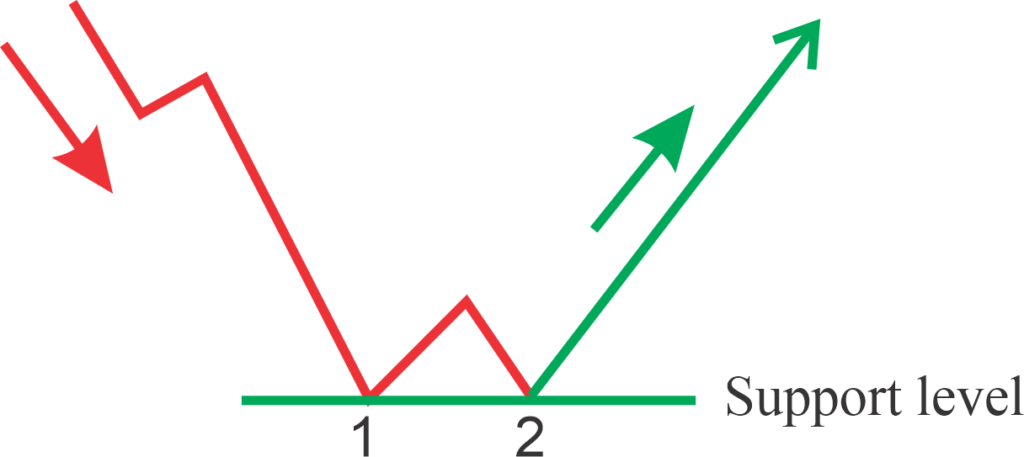Support

Support refers to a particular price level at which there is a higher demand from buyers than there is supply from sellers. In other words, if the price of a security or asset drops to this level, buyers are more likely to step in and purchase the security, which prevents the price from declining further. This creates a sort of “floor” for the price, as the buying pressure at this level can cause the price to stabilize and rebound. Therefore, the support level can act as a signal for traders to enter the market and potentially take advantage of a potential price increase.
Round numbers act as support and resistance levels. Ex. 41500, 42000 levels in bank nifty and 17100, 17200 levels in Nifty act as a support and resistance.
Resistance

Resistance is a level at which there is a higher supply of sellers than there is demand from buyers for a particular security or asset. If the price of the asset reaches this
level, sellers tend to become more active and are likely to sell their holdings, creating a barrier that prevents the price from rising further.
This level is like a “ceiling” for the price, as the selling pressure can cause the price to stabilize or even reverse its upward trend. Therefore, the resistance level can be seen as a signal for traders to potentially exit the market or take a more cautious approach, as the price may have difficulty breaking through this level.
Psychology behind Support Level

When a stock’s price drops to a support level, it often stops falling and bounces back up. But before fully rising, the price retests this support level again. Look at point “2” in the diagram—this is where several market forces work together to push the price up again.
Why does the price rise from support?
Missed Opportunity Buyers

Some traders missed buying at point “1” but now see the price at the same level again.
They don’t want to miss out again, so they place buy orders at point “2”.
Sellers Closing Positions

Traders who sold earlier see the market rising at point “2”.
To avoid losses, they exit their short trades by buying back the stock, adding more buying pressure.
New Buyers Entering the Market

Some traders wait for confirmation before buying.
When they see the price holding at point “2”, they feel confident and place buy orders.
Existing Buyers Adding More

Increased Demand Pushes the Price Up
More buyers enter the market, increasing demand.
As demand rises, the price starts moving up, creating a self-reinforcing uptrend.
More traders see the price rising and join in, pushing the stock even higher.
When a support level is broken, it can potentially become a new resistance level

When a resistance level is broken, it can potentially become a new support level.




